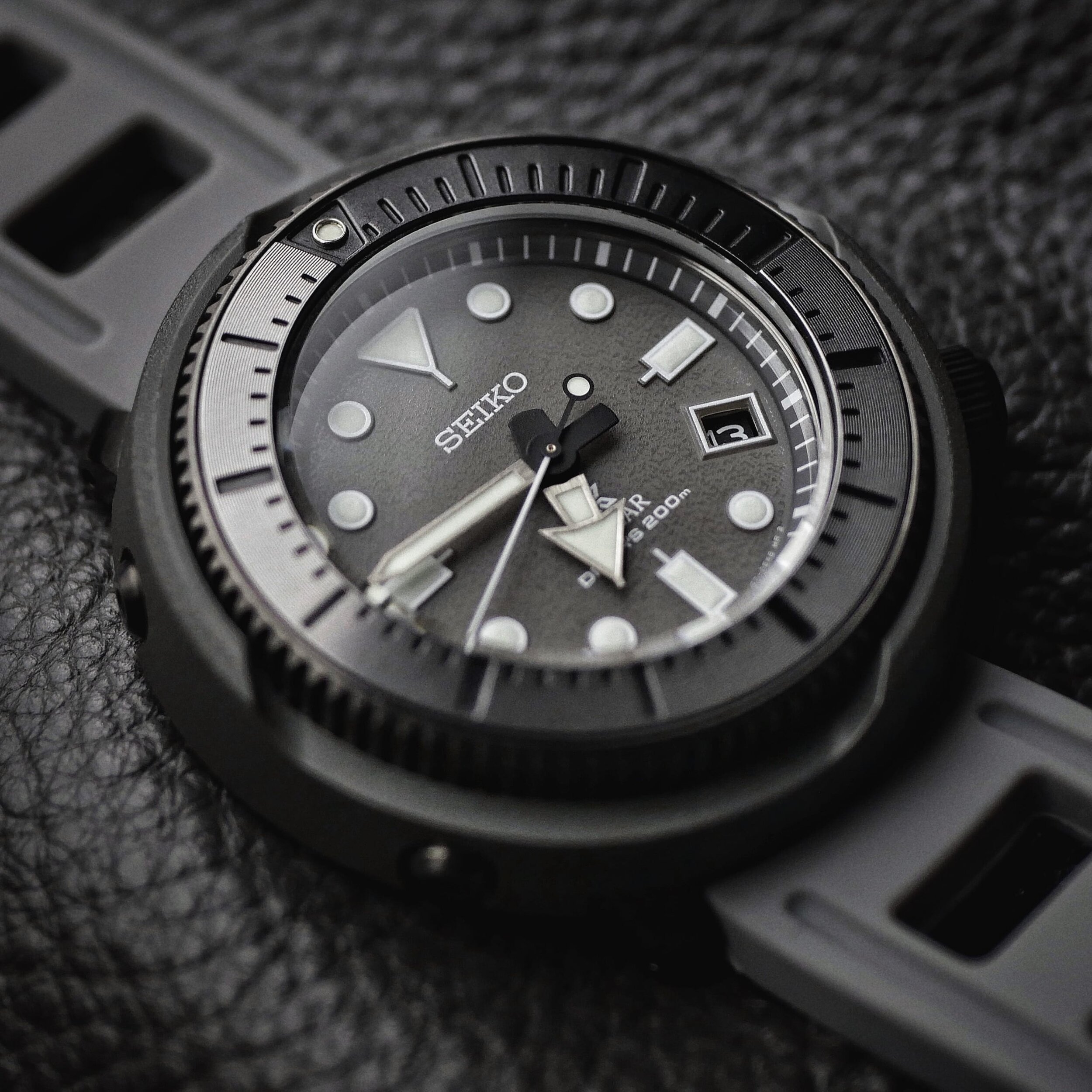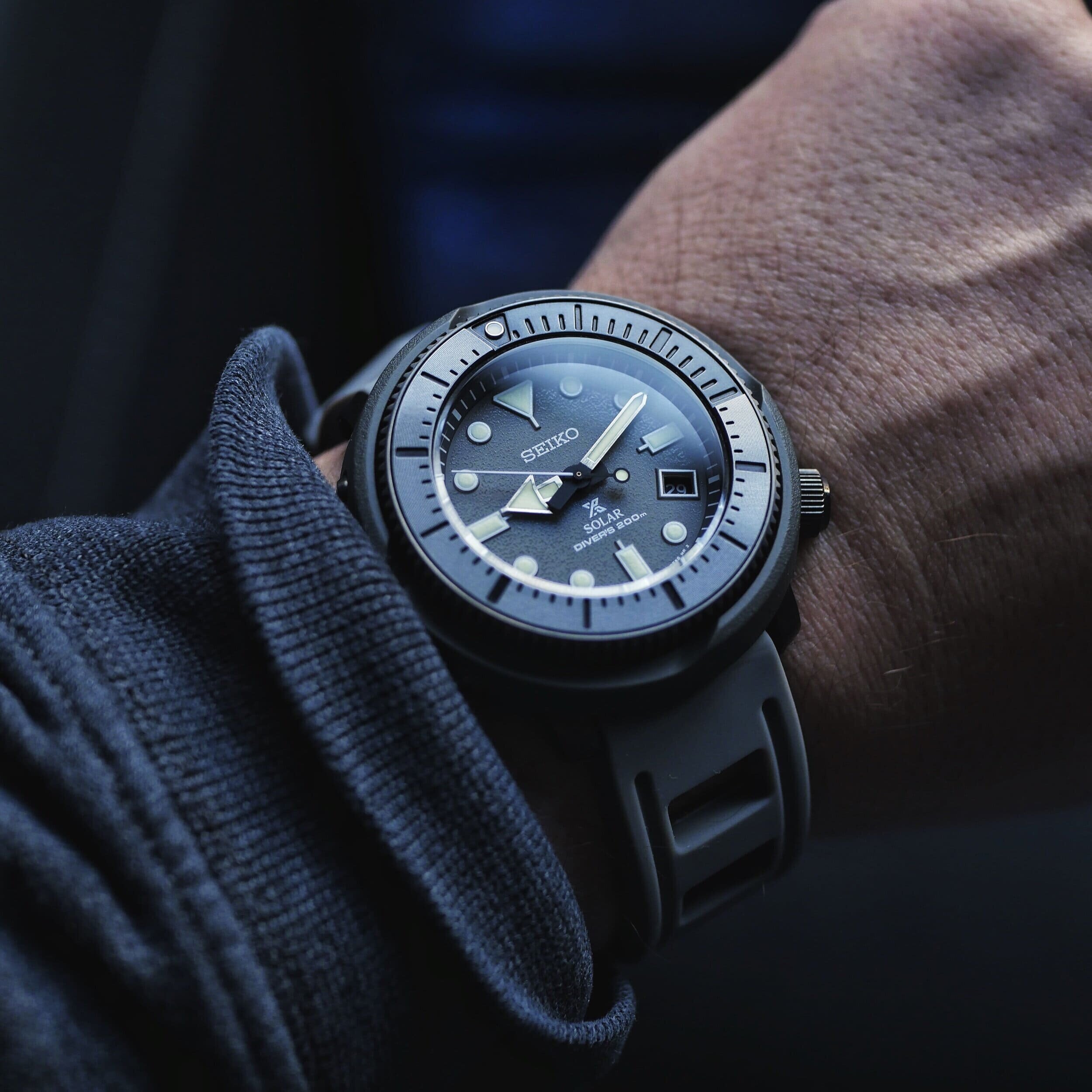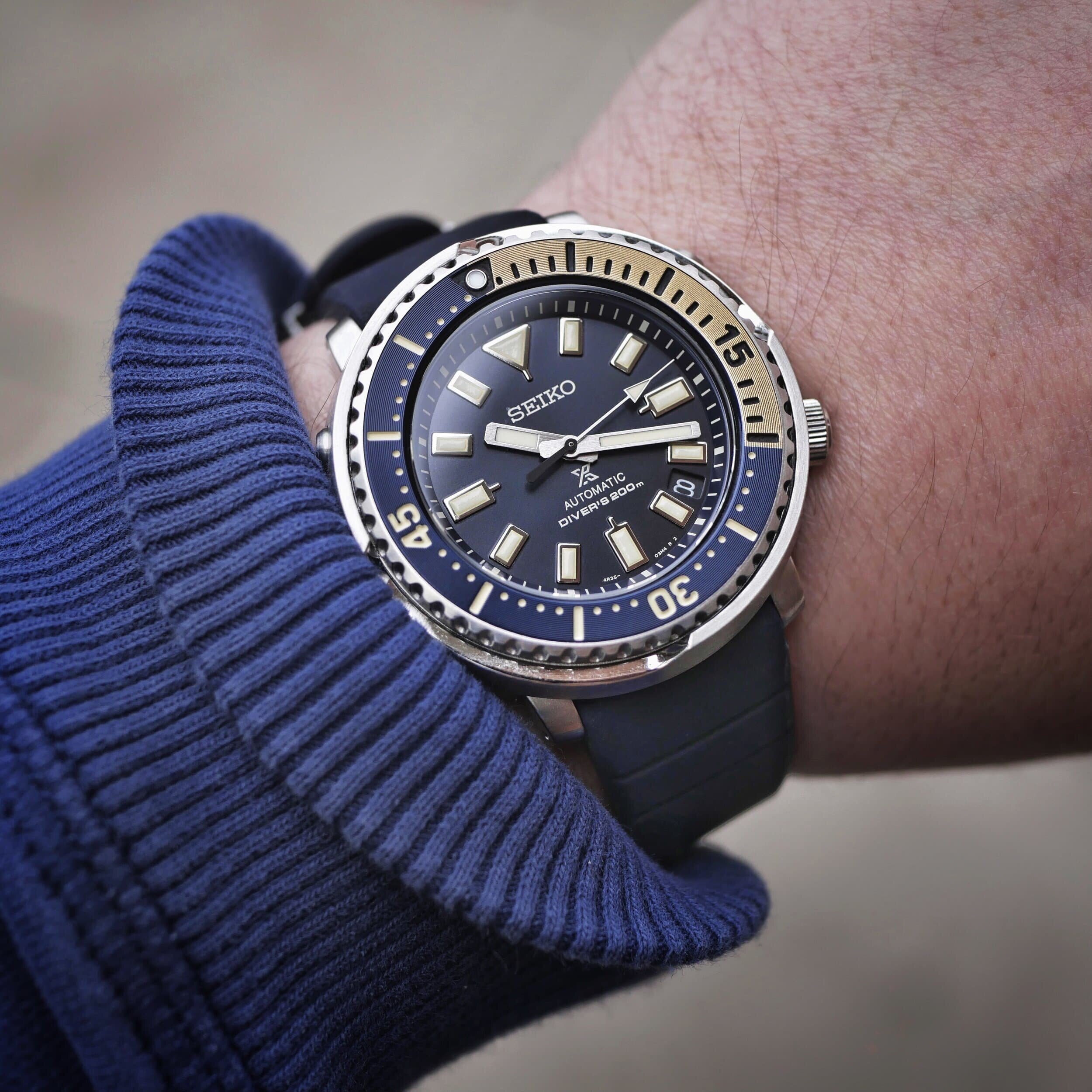Are Seiko solar watches good?
Solar Street Series Tuna in grey (Solar)
Seiko Safari Tuna in blue and sand (Automatic)
This article may contain affiliate links which means if you choose to purchase a product using the link, I may get a small commission. This is at no extra cost to you and enables me to keep writing reviews of watches and products I genuinely think you will enjoy or find useful.
The Solar Question
Since I purchased the Safari Series Seiko Tuna SRPF81K1, I have had several questions about how this compares to the older model I have, the SNE537P1. The most popular question seems to be, aside from the noticeable aesthetic differences, is the SRPF81K1 worth the extra money in automatic form? Essentially is the Solar movement any good as the SRPF81K1 is also available in a solar form SUT403P1 at quite a bit less in terms of price.
First off, my stock response to this question when I get asked on Instagram is yes, the solar movement from Seiko, In my experience, has been very solid, accurate and dependable. It requires minimal maintenance and has a battery life of approximately ten years. So what’s not to like or good about that?
I guess this is where a simple question can be genuinely that simple or maybe a little more complex.
Everyone is different, and maybe this is the first foray into solar watches, or perhaps you have been collecting watches but usually lean more towards mechanical movements?
Maybe you work in a low light environment, or this is a second or one of perhaps multiple watches and would be stored away for days or weeks between wears.
All these things play into an individual's view of what they need and if something is “good”. After all, good for me might be entirely inappropriate for your needs.
Let’s briefly look at how Seiko's solar movement works and some of the pro’s and con’s of a solar-powered Seiko watch.
Unlike a traditional mechanical movement which requires winding or movement to turn a rotor to then convert this into energy to power a watch, the solar movement through the use of a solar cell captures the light coming in through the watch face. It then converts this into electricity which is stored in a rechargeable battery and powers the watch.
This gives the wearer the ability to constantly top up the charge on their watch whenever it is exposed to light. Now it’s important to note that not all light is the same, and although it will still convert into electrical energy, the differences can be huge. So shining a small torch at the watch will impart considerably less charge than wearing it outside during a sunny summer day. Regardless though, charging to some degree will take place.
So then the burning question most people have is how long does a charged watch last? Well, Seiko say a single charge can last up to 6 months! So you don’t need to become obsessed with walking around holding your wrist aloft to the sun for fear of it stopping as soon as the sun goes down. In actual-world usage, I have gone 2-3 months with my solar-powered Seiko tuna sitting in a watch box in the cupboard, only to get it out and find all I need to adjust is the date. I make it a habit to get any of my solar-powered watches out at least one bright sunny day a year and leave them in direct sunlight for the day to charge. This, coupled with wear throughout the year, has meant I’ve never come to them to find they have died.
This automatic version houses the 4R36 automatic movement
But of course, a battery, even a rechargeable one, does have a finite life span, and Seiko says this is around ten years. So ten years of worry-free accurate timekeeping is what you can expect from these movements. When it comes time to change these, it’s also something you may be able to do yourself, unlike servicing a mechanical movement. There is a wealth of videos and instructions available on how to do this, and at the cost of around £20 for a new battery, it’s possibly more cost-effective to maintain it.
How about accuracy? Well, the V157 movement in the Seiko street series is accurate to 15 seconds a month. Let that sink in. Yes, they are very accurate and over long periods of time, which is another big bonus of these movements. They make excellent second watches for a specific purpose, for instance, diving. This can be fully charged and sat in your kit bag, and is ready to go when you are without the need to wind it up and with no concerns over if it needs servicing for accuracy.
Compare this to my Automatic version featuring the 4R36 movement. In comparison, Seiko states this will gain 45 seconds or lose 35 seconds a day! Depending on wear, age and a whole host of other factors. In terms of outright accuracy, the solar movement is on another level. Whether that is your chief concern, only you can decide, but the figures speak for themselves.
Note the dial texture which allows the light to pass through to charge the cell
How about negatives? Well, when a solar watch stops, it stops. Obvious, I know, but you can’t simply wind it up on the go. It will take time to recharge, or you will need to replace the battery if you're reaching that ten-year mark. Maybe you're just not in love with the thought of a watch that’s not purely mechanical? That’s fine too. I have both and enjoy both for different reasons. But maybe for you, Solar as a movement doesn’t quite have the wow factor of a fully mechanical movement. They are also not suited for anyone who works in complete and utter darkness year-round. Think mole people or maybe reptilian overlords who live in the inner earth.
8 of the most popular Seiko Solar Models
| Model | Case Material | Case Diameter | Movement | Water Resistance |
|---|---|---|---|---|
| Seiko Prospex Solar Diver's | Stainless Steel | 43.5mm | Solar, Calibre V157 | 200m |
| Seiko Solar SNE331 | Stainless Steel | 43mm | Solar, Calibre V158 | 100m |
| Seiko Solar SNE039 | Stainless Steel | 37mm | Solar, Calibre V158 | 30m |
| Seiko Solar SNE325 | Stainless Steel | 41mm | Solar, Calibre V157 | 100m |
| Seiko Solar SNE329 | Stainless Steel | 43mm | Solar, Calibre V158 | 100m |
| Seiko Solar SNE498 | Stainless Steel | 47mm | Solar, Calibre V157 | 200m |
| Seiko Solar SSC143 | Stainless Steel | 42mm | Solar, Calibre V172 | 100m |
| Seiko Solar SSC667 | Stainless Steel | 43.5mm | Solar, Calibre V175 | 200m |
Conclusion
All jokes aside, it's hard to find many downsides to the Seiko solar-powered range. They offer worry-free accurate timekeeping that is grab-and-go friendly with low maintenance overheads compared to their mechanical brethren. Would I only ever use Solar movement Seiko’s? No, I have a place for both in my collection and appreciate the benefits of both, but I certainly wouldn’t be without these solar options. I think they offer excellent value and usability for 99% of people out there who need a reliable, accurate watch.
Looking for other Seiko Solar watch options?
Check out my deep dive into the Seiko Prospex line of divers watches.











